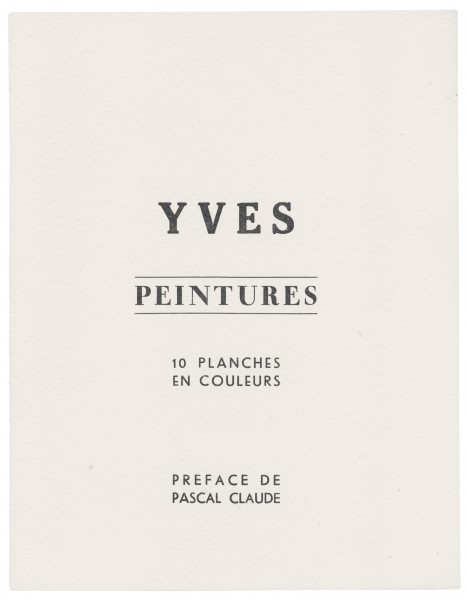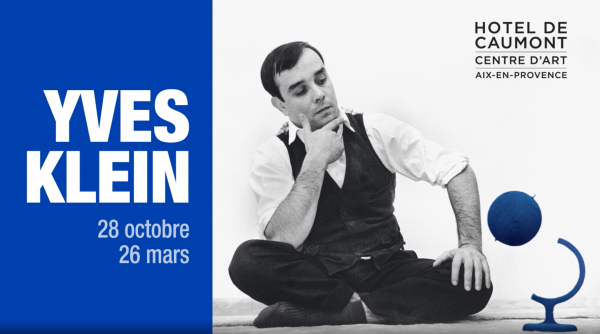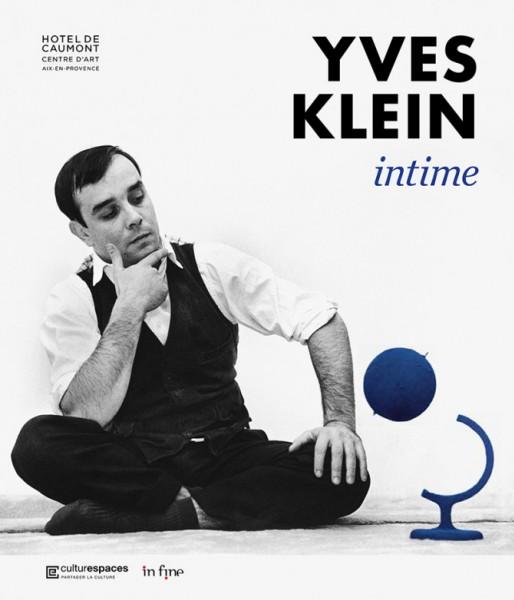Yves Klein's very first works were fictional catalogues, produced in 1954 with the help of Fernando Franco de Sarabia (a friend of Klein's father who worked as a printer in Madrid, where he had enabled the artist to teach judo that year): Yves, peintures and Haguenault, peintures.
As we know, these are two booklets of fine paper, folded into pages measuring around 25 × 20 cm, on which are pasted ten rectangles of tinted paper, of different colours and proportions, sometimes with a handwritten signature in the bottom right-hand corner, and always captioned as if they were reproductions of paintings, although the captions are not made on an identical model, some including dimensions and others not, city names or not... The number of copies printed in 1954 remains uncertain. The two different titles would seem to refer to two different artists, but the same plates were used for both publications, albeit with minute differences, and while "Yves" is obviously Klein himself, there is little to distinguish him from "Haguenault" (the reason for the choice of this surname, attested in France but rare, is still unknown).
Contrary to what has been repeatedly asserted, these booklets-catalogues, mimicking reproductions of monochrome canvases that did not yet exist, were in no way intended to deceive, nor would they have fooled anyone: it was a dream, the dream of a collection of monochromes that could have been viewed in collections in Nice, Paris, Madrid, London or Tokyo - the ideal example of what sociologists or psychologists would call a self-fulfilling prophecy, since the suggestive power of Klein's imagination means that today we can indeed contemplate monochromes signed by the artist in Nice, Paris, Madrid, London or Tokyo...But when it comes to the written word, Yves peintures and Haguenault peintures include a singular feature: the preface, signed by Pascal Claude (Claude Pascal, the faithful friend he met in 1948 at a judo club in Nice). It consists of just three pages of continuous lines, structured in three times two identical paragraphs, with a slight indentation at the beginning and end, and resembles a text meticulously redacted by a Soviet censor, or the lines of a notebook yet to be filled in. It is as if a self-fulfilling prophecy had foreseen both the advent of colour alone on Yves Klein's future canvases, and the impossible form of the book intended to celebrate its ineffable nature. All we have of Yves Klein are incompletely written fragments: but these Dead Sea Scrolls are destined to fuel the passion of exegetes for a long time to come.
Didier Semin, excerpt from the catalogue "Yves Klein intime", Editions In Fine, 2022
Didier Semin was curator at the Musée d'Art Moderne de la Ville de Paris and the Musée National d'Art Moderne, before teaching art history at the Beaux-Arts de Paris from 1998 to 2020. With Marie-Anne Sichère, he edited Yves Klein's writings (Le Dépassement de la problématique de l'art et autres écrits, Paris, École nationale supérieure des Beaux-Arts, "Écrits d'artistes" series, 2003).
Yves Peintures, 18 novembre 1954
![A look at "Yves Peintures" [Yves Paintings]](/files/article_thumbnail_53.jpeg)
![Yves Peintures [Yves Paintings]](/files/picture_thumbnail_944.jpg)
![Yves Peintures [Yves Paintings]](/files/picture_thumbnail_2451.jpg)


